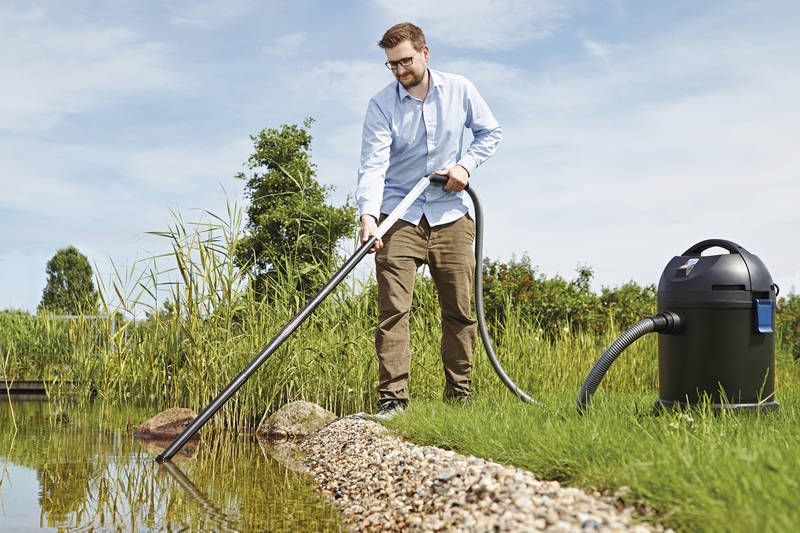How to use a Pond Vac
There are many reasons for the accumulation of sludge at the bottom of the ornamental fish pond. Fish waste, uneaten fish food, dead pieces of aquatic plants, aquatic compost gradually leaking from pond plant baskets, and, particularly during the autumn, fallen leaves and other garden debris. All of these things build up over time, decay, and turn into a thick sludge on the base of the pond. Although unseen for the most part, this sludge can silently cause water quality problems, such as elevated nitrate, which in turn is responsible for algae problems. Large accumulations of sludge can also lead to many fish health problems. Even if you run a powerful filter, the time will come when you need to intervene and carry out a more thorough clean. Traditionally, aquarists will have used a simple net/scoop, gauntlet gloves, and elbow grease to remove sludge from the bottom of the pond, but this is an extremely laborious and messy task, often involving draining of the pond. Pond vacs (pond vacuum cleaners) have made this job so much easier, less unpleasant, and nowhere near as time consuming. Pond vacs operate much like a regular, household vacuum cleaner. Most models are placed at the side of the pond, on dry land, and a telescopic pipe used to reach the bottom and sides of the pond. As you move the vacuum head slowly back and forth over the substrate, the pond vac will pull water from the pond, at the same time sucking up the sludge. Different models work in a variety of ways but the most common type are set up to dispose of the removed water and muck straight down the drain (or onto a garden plant border - it is a great fertiliser). Other types trap the sludge in a specialised bag or container, which can then be emptied afterwards, and many also return the 'cleaned' water to the pond (although note this is likely to be high in nitrate, so you may prefer to collect this and water the garden with it instead). For smaller ponds, the hose-powered models are ideal, and for larger, deeper ponds, use a pump-powered model. Most vacs will come with a selection of cleaning attachments to reach various nooks and crannies and tackle different types of debris. There is no need to drain the pond beforehand, and the fish can remain in situ whilst cleaning is carried out, as they instinctively know to move away from the equipment. The best time to vacuum the pond is late summer/early autumn (August-September). This is because amphibians will have finished breeding by this time, and insects such as dragonflies and water beetles will have reached their adult flying stage, and can move safely out of the way to other ponds. For more information on pond vacs, please speak to a friendly member of staff. Your nearest branch of Maidenhead Aquatics may be found here.




